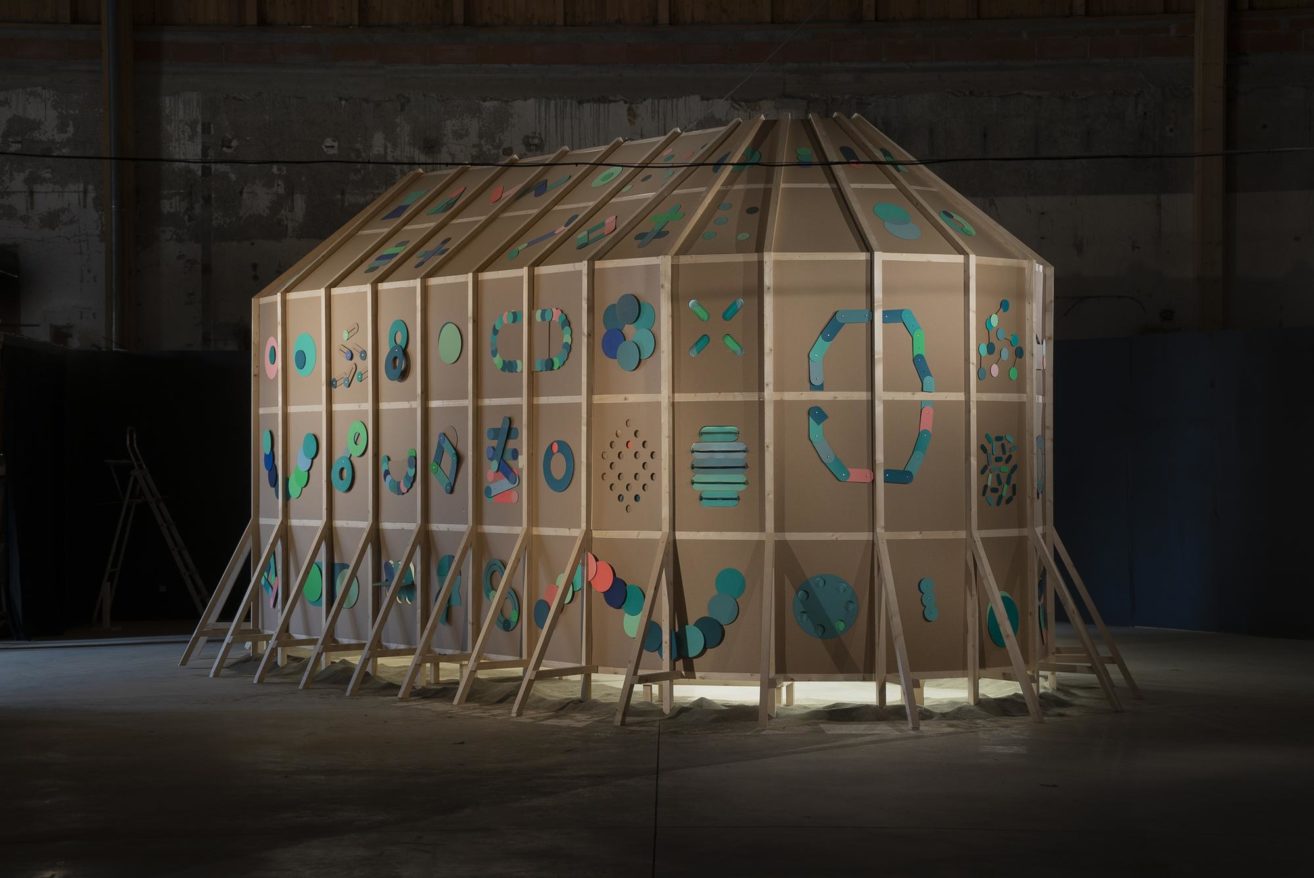In a world dominated by high-tech marvels, Marion Pinaffo and Raphaël Pluvinage observe, manipulate, and experiment with technical and physical systems to create interaction between the mathematical logic of automata and human creativity. The French duo of innovative artists recently turned their attention to a seemingly simple material: sand. What they’ve achieved with it is nothing short of breathtaking — a micro-architecture-automaton that operates solely on the power of sand, devoid of any electrical input, yet boasting a sophistication rivaling that of electronic machines. The duo whose been working together since 2015, is known for their masterful manipulation of materials and creation of exceptional physical realities.
Titled En Cascade, Mécanique Sablonneuse, the hand-built hut-like structure crafted from paper and cardboard was originally built amidst the stunning backdrop of the Pyrénées Oriantales coastline in Anse de Paulilles, where the machine utilized sand directly from the beach. But what sets this installation apart is not its size or location, but the mesmerizing architecture and mechanics of controlling such challenging yet simple mediums. The main structure contains numerous panels with colorfully illustrated geometric compositions that the artists animate manually, by pouring various quantities of sand through devices designed to move the structure.
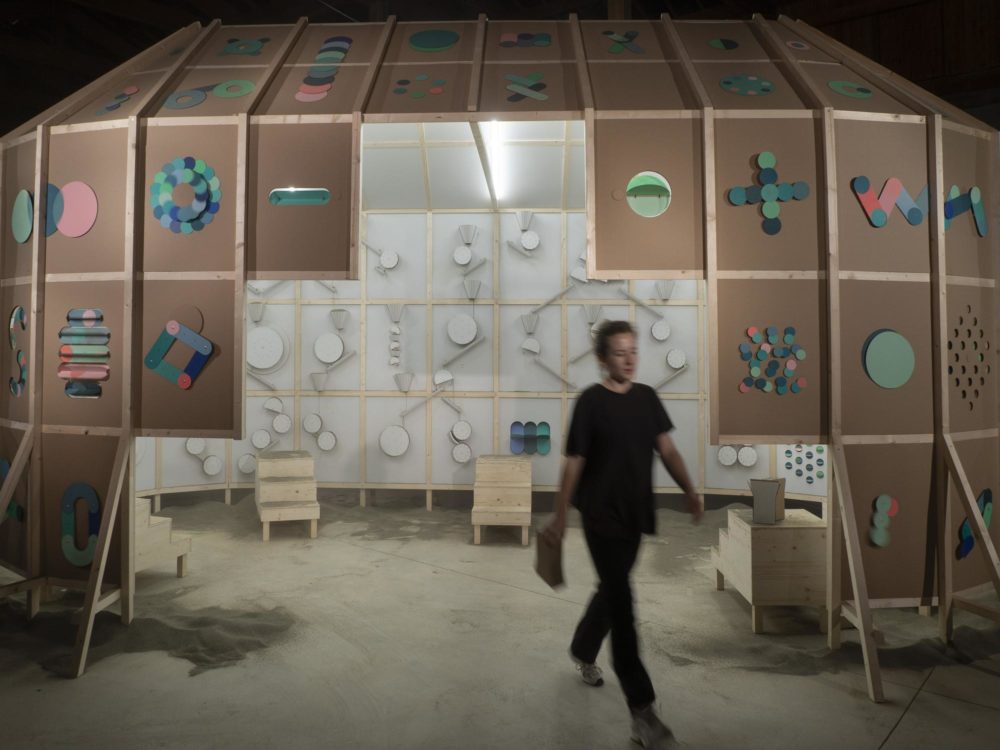 The interplay between sand and mechanics brings the structure and its decorations to life
The interplay between sand and mechanics brings the structure and its decorations to life
From afar, spectators are dazzled by the intricate movements coursing through the animated illustration on the structure’s walls, orchestrated by the motors and electronics built within. But upon entering, one discovers the true magic: every animation is fueled by cascading streams of sand, meticulously choreographed to mimic the precision of programmed motors.
Requiring no electricity, En Cascade relies on the audience to replenish its sand reservoirs, each compartment boasting a brief autonomy of approximately ten minutes. Yet, far from being a mere propellant, sand becomes a masterful tool for programming, with mechanisms ingeniously designed to replicate the complexity of electronic movements—syncing, repeating, pausing, looping, and more.
Beyond its granular appearance lies a world of scientific intricacies— grain geometry dictating behavior, fluid-like properties transitioning between solid and gas, and the mathematical elegance of sandpile formations.
But what does this low-tech experimentation reveal about the enigmatic nature of sand? The creators shed light on the material’s surprising complexities in a video interview conducted by Caroline Naphegyu. “Beyond its granular appearance lies a world of scientific intricacies— grain geometry dictating behavior, fluid-like properties transitioning between solid and gas, and the mathematical elegance of sandpile formations.”
Furthermore, En Cascade challenges our perception of high-tech versus low-tech. While modern installations often rely on complex electronics, this project proves that simplicity can be just as captivating. By harnessing sand’s natural fluidity, the artists have unlocked a realm of mechanical possibilities—rotations, translations, and even digital-like logic—all without a single microchip.
In essence, En Cascade is more than just an art installation; it’s a testament to nature’s ingenuity and human innovation. As spectators marvel at its sand-fueled symphony, they’re invited to ponder the delicate balance between high-tech aspirations and the timeless beauty of the natural world.

By loading the video, you agree to Vimeo's privacy policy.
Learn more
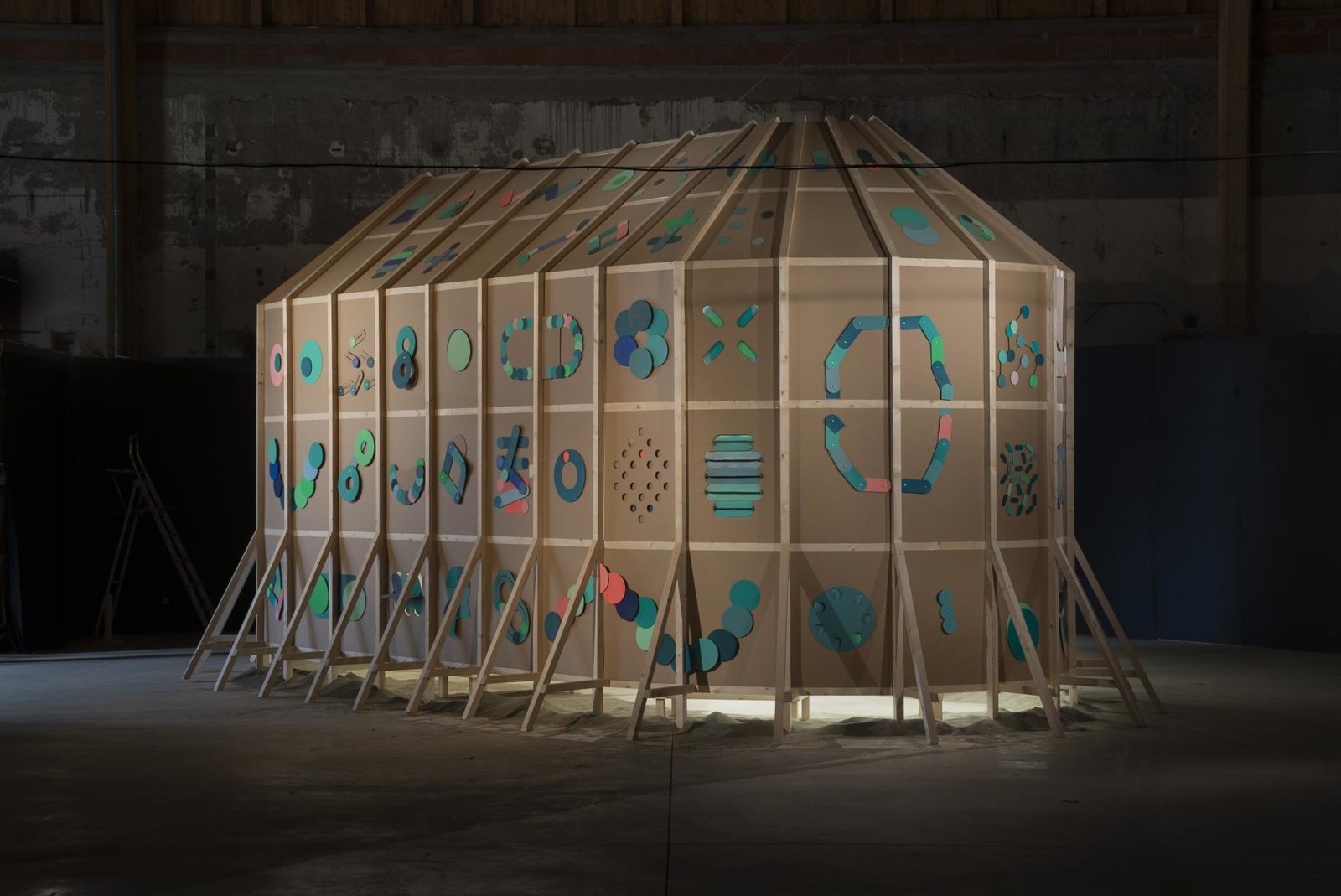
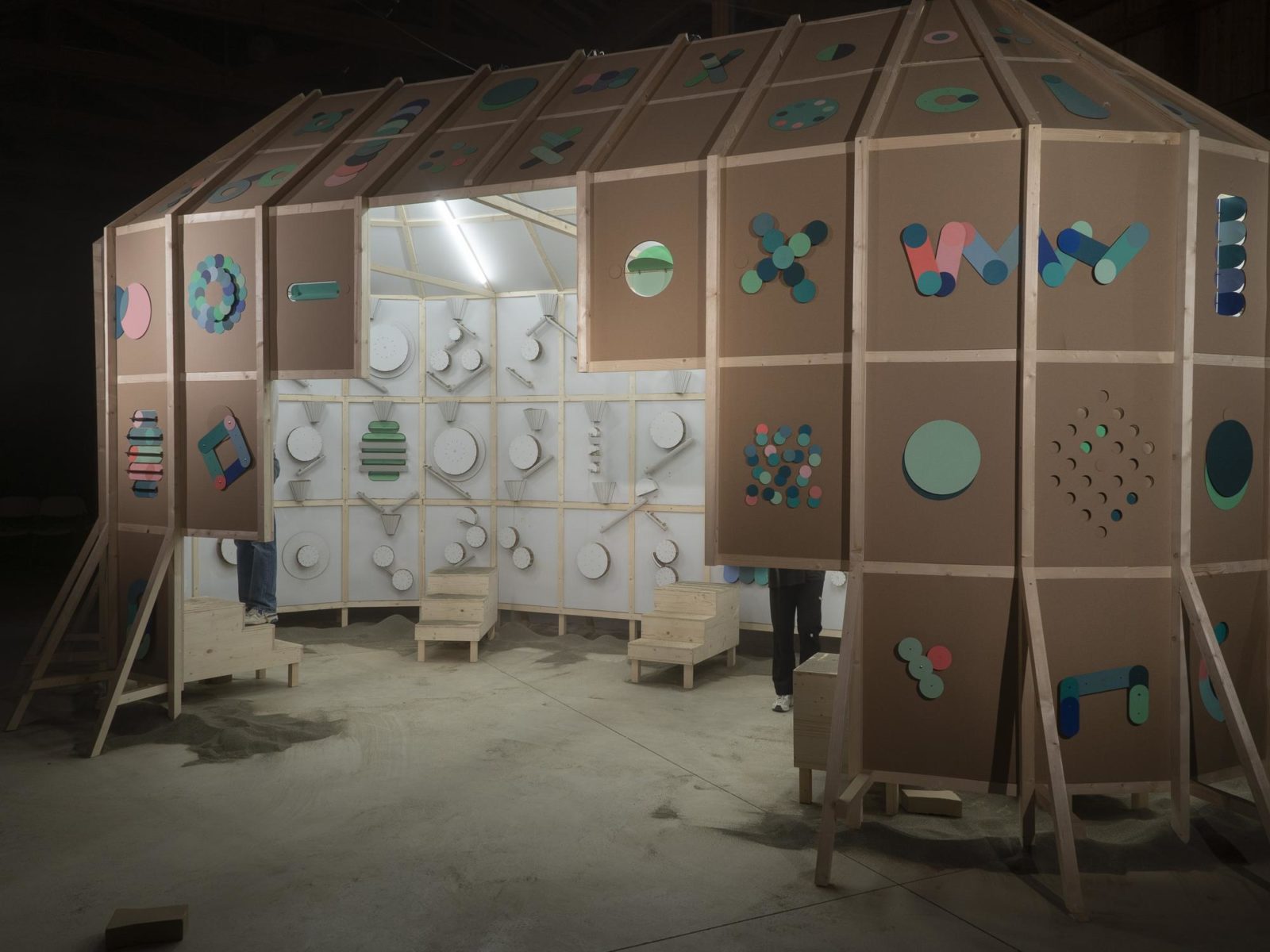
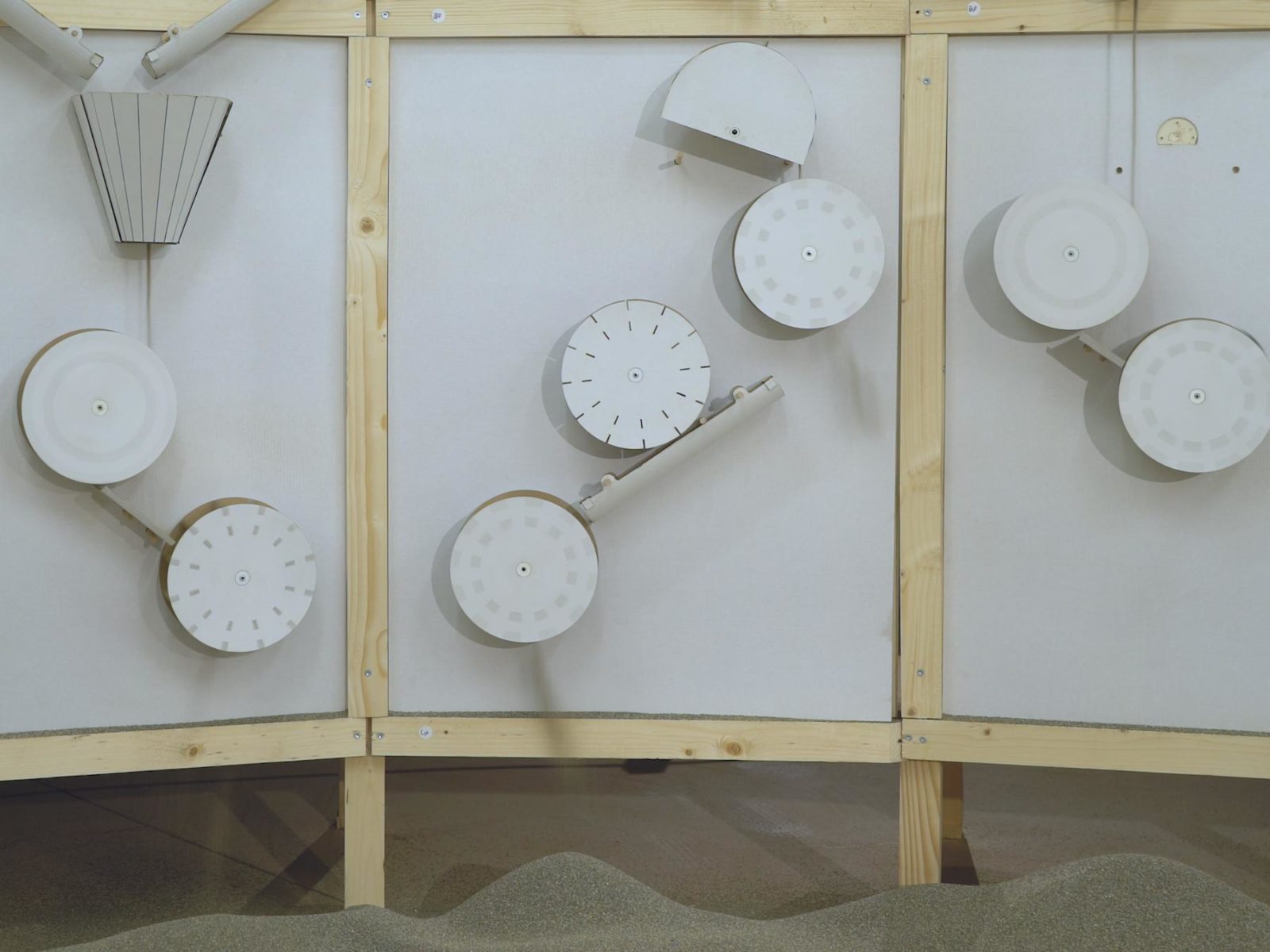
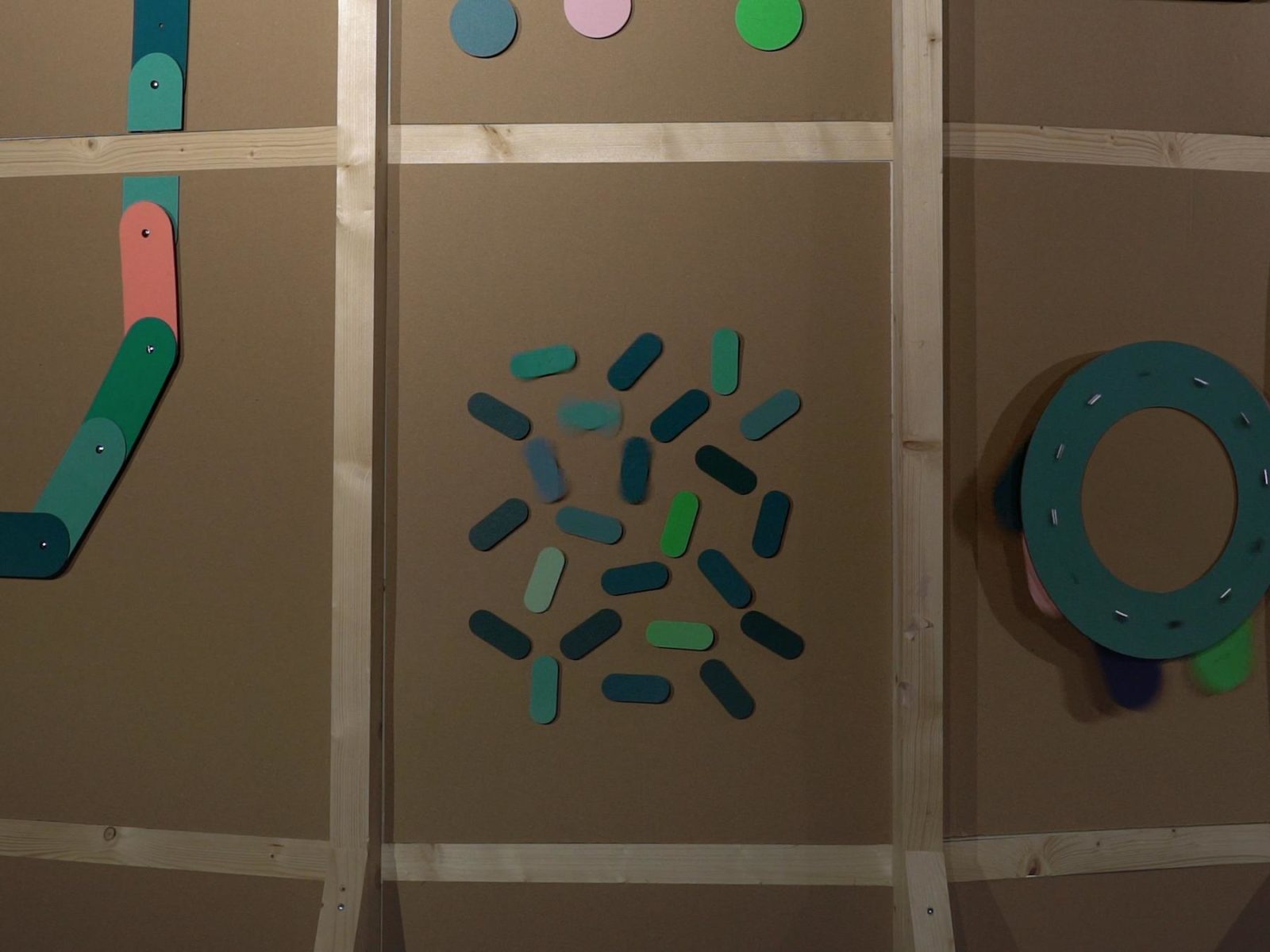
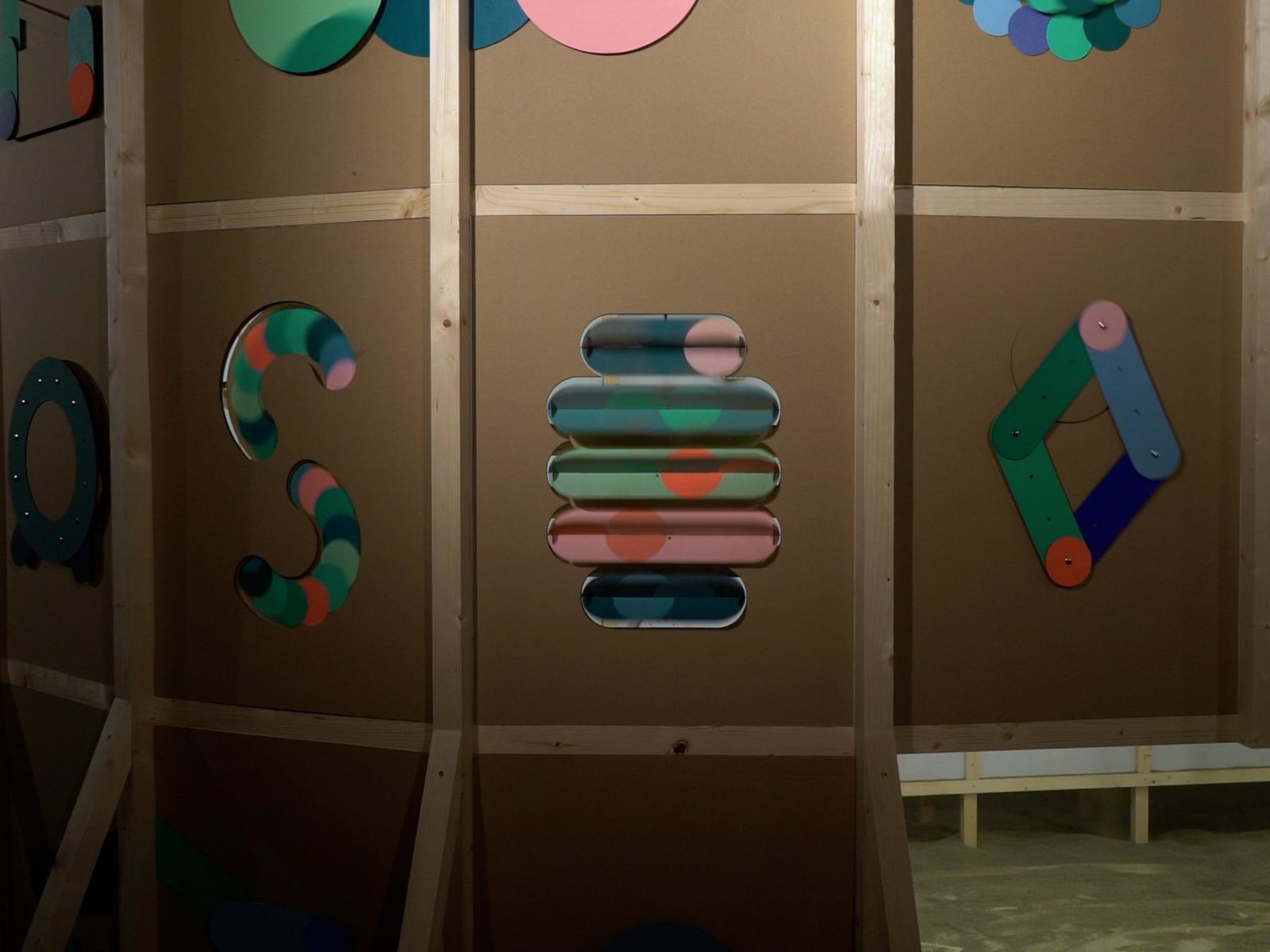
Images © Pinaffo & Pluvinage

